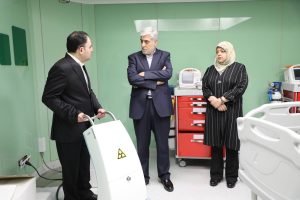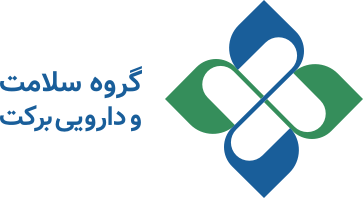
Public Health & Crisis Management in Iran: Advanced Strategies for Global Epidemic Preparedness
Barekat Health & Pharmaceuticals Group: Public health, as a fundamental component of sustainable development in any country, plays an unparalleled role in ensuring community well-being. In recent decades, the world has witnessed the emergence and rapid spread of epidemics and pandemics, posing challenges to all nations, including Iran.
Epidemics not only cause widespread mortality but also threaten public health, the economy, and national security. Iran, as a key country in the Middle East, with a rich history of battling infectious diseases and epidemics, has garnered valuable experience in managing health crises. This article provides an in-depth analysis of Iran’s public health system, its challenges and opportunities, and strategies for addressing epidemics and pandemics.
Historical & Analytical Overview of Major Epidemics
Historical Epidemics and Their Impact on Iran: Throughout history, Iran has faced devastating epidemics such as the plague and cholera. These diseases not only caused significant mortality but also dramatically impacted the country’s social and economic structures. For example, the Black Plague, which reached Iran in the 14th century, wiped out large portions of the population and severely damaged agricultural and trade systems. During the Qajar era, multiple cholera outbreaks claimed thousands of lives. These epidemics spread rapidly due to the lack of effective healthcare systems, weak crisis management, and the inability to promptly control the spread of diseases.
Recent Epidemics and Their Effects: One notable epidemic that challenged Iran in the past decade was the outbreak of the H1N1 virus. Although not as severe as the Spanish flu, it highlighted Iran’s continued challenges in preparedness for epidemics. The outbreak of COVID-19 in Iran quickly escalated into a national health crisis. This pandemic not only strained the public health system but also revealed serious deficiencies in crisis management and the provision of healthcare resources.
Structure and Function of the Public Health System
– Ministry of Health and Medical Education: This ministry serves as the primary entity responsible for public health in Iran, overseeing the delivery of healthcare services, developing health policies, and managing health crises. Its structure is designed to operate effectively at both national and local levels.
– Rural and Urban Health Networks: Iran boasts one of the most extensive rural health networks in the region. These networks include rural health houses and urban health centers that provide primary healthcare services to a large portion of the population. They play a critical role in controlling and preventing the spread of diseases.
Strengths and Weaknesses of the Healthcare System
Iran’s healthcare system benefits from a well-trained medical workforce, relatively good healthcare infrastructure compared to many regional countries, and extensive experience in combating infectious diseases. Additionally, advancements in modern medical technologies and domestic production of pharmaceuticals and medical equipment are considered strengths of the system.
However, financial limitations, a lack of coordination between different governmental sectors, and weaknesses in health data management and information systems are significant challenges. These issues became particularly evident during crises like the COVID-19 pandemic, where problems in resource distribution, testing, and service provision were clearly seen.
Challenges in Managing Health Crises
– Resource Shortages: One of Iran’s biggest challenges in managing health crises is the shortage of financial and human resources. These shortages prevent the healthcare system from effectively responding to crises.
– Weak Information Infrastructure: Inability to collect and analyze health data promptly and accurately is another major challenge. This issue can lead to uncoordinated crisis responses and the inability to forecast and prevent disease outbreaks.
– Managerial Challenges: Lack of coordination between various governmental bodies and weaknesses in crisis management prolong response times and reduce the effectiveness of health interventions.
Opportunities
– Development of New Technologies: Leveraging new technologies, such as early warning systems, data mining for disease outbreak prediction, and the development of health applications, can improve crisis management.
– Strengthening International Collaboration: Iran can benefit from strengthening international collaborations in public health to leverage global experiences and resources for improving its healthcare system.
– The Role of Knowledge-Based Companies: Iranian knowledge-based companies, particularly in the areas of pharmaceutical production, medical equipment, and information technologies, can play a key role in strengthening the country’s healthcare capabilities.
Case Study: COVID-19 Crisis Management
Initial Response to the Crisis
– Initial Decisions and Actions: As the spread of the coronavirus began in Iran, the government took various measures, including closing schools, implementing social restrictions, and encouraging mask usage. However, weaknesses in information management and lack of coordination in some areas led to ineffective responses in certain cases.
– Challenges Faced: Major challenges in the initial management of the crisis included shortages of protective equipment, difficulties in providing sufficient testing kits, and inadequate preparedness of healthcare facilities to handle the high volume of patients.
Health and Treatment Strategies
– Testing Programs: Iran implemented extensive testing programs to identify COVID-19 cases. However, these programs faced challenges such as a shortage of testing kits and logistical limitations.
– Patient Treatment and Hospital Capacity Expansion: The government expanded hospital capacity and equipped healthcare centers to provide necessary services to COVID-19 patients. Nonetheless, the healthcare system faced overwhelming pressure due to the high number of patients.
Vaccination and Challenges
– Vaccine Distribution and Supply: One of the biggest challenges during the COVID-19 pandemic was securing and distributing vaccines. Iran faced difficulties such as limited access to vaccines produced in other countries and economic sanctions, which negatively impacted the national vaccination campaign.
– Role of Domestic Production: Iran relied on its domestic capabilities to produce indigenous vaccines such as “COV Iran Barekat.” This move reduced dependency on vaccine imports and boosted public trust in the country’s domestic health and pharmaceutical capabilities.
Role of Local Innovations & Knowledge-Based Companies
– Medical Equipment Production: Iranian knowledge-based companies played a significant role in producing medical equipment, including ventilators, medical masks, and protective gear, during the COVID-19 pandemic. These companies quickly adopted modern technologies to meet the immediate needs of the healthcare system and reduced reliance on imports.
– Digital Innovations: Additionally, domestic technology companies developed crisis management applications and contact-tracing systems. These innovations improved monitoring and control of the virus spread in the country, enhancing data management and healthcare efficiency.
Conclusion
With a rich history in combating epidemics and health crises, Iran faces serious and complex challenges in this area. While the country’s healthcare system possesses significant strengths in delivering primary healthcare and managing certain crises, it continues to struggle with issues such as financial constraints, weak information infrastructure, and managerial inefficiencies. The COVID-19 pandemic demonstrated that Iran needs to strengthen its public health system, adopt new technologies, and increase international cooperation to effectively address global epidemics.
At the same time, there are important opportunities for improving and strengthening the country’s healthcare system. These opportunities include the development of knowledge-based companies, local innovations, and enhanced international collaborations. By leveraging these opportunities, Iran can not only improve its performance in combating epidemics and infectious diseases but also position itself as a leading country in public health and crisis management in the region.
-
Barkat Group specialized meeting

-
Safa Appointed as Barekat General Director

-
Barekat Health & Pharmaceutical Group at the 10th Iran Pharma Exhibition

-
Ali Safa visits Sobhan Oncology & Sobhan Darou
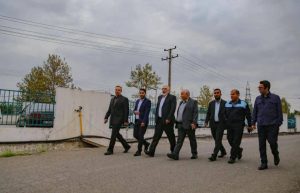
-
Pirsalehi & Safa visit Saman Daroo 8 Knowledge-based Company
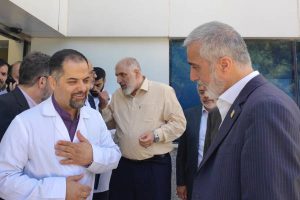
-
Barekat Managing Director Visits Samen Pharmaceutical Company
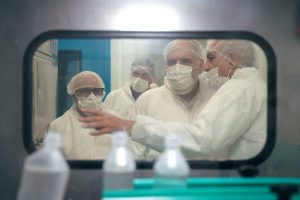
-
Honoring Pharmacists’ Day
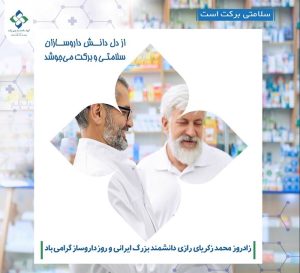
-
Barekat Top Executives Visiting to Barekat Hospital
